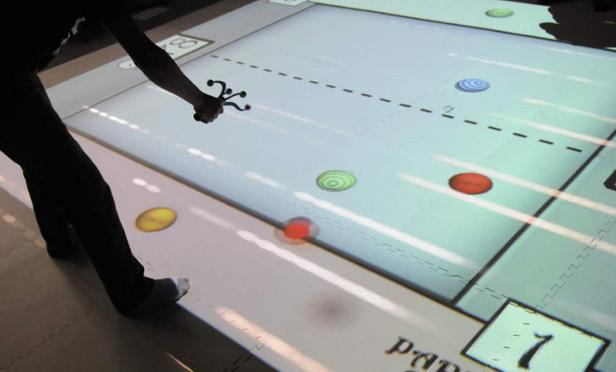Enlightened by Interactive Learning
There is no question that schools and classrooms have been changing over the years. For many of us it was a novel idea to have a computer lab with a handful of computers that you would tinker with once a week. Today, students are growing up in a technology-rich environment and are finding it more difficult to pay attention in a passive learning environment copying figures from the board.
More and more schools are turning to interactive learning to inspire students and keep them engaged in their lessons.
Interactive learning is not a new concept. By definition it is a more hands-on, real-world process of relaying information in classrooms. While passive learning relies on listening to teacher lectures or rote memorization of information, figures, or equations, interactive learning invites students to participate in the conversation, through technology or through role-playing group exercises in class.
Interactive learning engages students who are raised in hyper-stimulated environments. It sharpens their critical thinking skills which are fundamental to the development of analytic reasoning.
“A child who can explore an open-ended question with imagination and logic is learning how to make decisions, as opposed to just regurgitating memorized information.” – Parent & Child Magazine, Scholastic.com
Interactive learning teachers children how to collaborate and work successfully in groups, an indispensable skill as workplaces become more team-based structure.
These 4th grade students at Blue Ridge School in Dalton, Georgia are working together against the clock to beat their high score. They must all pay attention, talk to one another, and know the information to succeed.
Even for the most prestigious institutions of higher education, interactive learning has impacted classrooms and lecture halls. Eric Mazur, Balkanski professor of physics and applied physics at Harvard, discovered his success as a teacher “was a complete illusion, a house of cards.”
“The students did well on textbook-style problems,” he explains. “They had a bag of tricks, formulas to apply. But that was solving problems by rote. They floundered on the simple word problems, which demanded a real understanding of the concepts behind the formulas.” – Harvard Magazine
Mazur stumbled on a breakthrough one day as he was reviewing questions with the class. He had spent 10 minutes trying to explain one of the questions to the class twice but they were still confused. He decided to have them discuss it with each other. They started talking to each other in one-on-one conversations and within three minutes, they had figured it out.
“Here’s what happened. First, when one student has the right answer and the other doesn’t, the first one is more likely to convince the second—it’s hard to talk someone into the wrong answer when they have the right one.” More important, a fellow student is more likely to reach them than Professor Mazur—and this is the crux of the method. You’re a student and you’ve only recently learned this, so you still know where you got hung up, because it’s not that long ago that you were hung up on that very same thing. Whereas Professor Mazur got hung up on this point when he was 17, and he no longer remembers how difficult it was back then. He has lost the ability to understand what a beginning learner faces. – Harvard Magazine
- Interactive learning triples students’ gains in knowledge as measured by conceptual tests and assessments.
- There’s also better retention of knowledge.
- Active learners take new information and apply it, rather than merely taking note of it.

In a SMALLab, students collaborate and discuss ideas they are learning, formulate hypotheses and test out their theories. SMALLab scenarios encourage student participation. Lessons become multimodal allowing teachers to use questions that stimulate response and discussion in a hands-on experience. SMALLab lets teachers press for answers, capture and hold the student’s attention. SMALLab provides a space where learners of all types, auditory, visual, and especially kinesthetic can engage and connect with the lessons. Find out more about Embodied Learning and how it can impact your learning goals.
Lucy Stickler from Providence Day shares about her experiences in the SMALLab with her class. See more of the interview here http://smallablearning.com/about/success-stories/
SMALLab Learning was founded in 2010 with the mission of advancing embodied learning in schools, museums, and the home. Our products include SMALLab and Flow.
